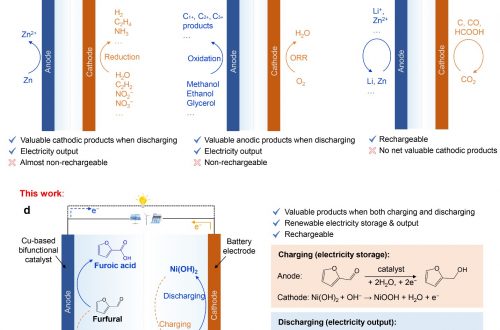74. Photoelectrocatalytic Valorization of Biomass-Derived Succinic Acid into Ethylene Coupled with Hydrogen Production over an Ultrathin BiOx‑Covered TiO2
Qiujin Shi, Jing Li, Yuanbo Liu, Kejian Kong, An-Zhen Li, and Haohong Duan*
ACS Catal. 2024, 14, 10728−10736
DOI: 10.1021/acscatal.4c02314

Abstract
Photoelectrochemical (PEC) cells have been extensively studied in water splitting to produce H2, but the sluggish kinetics of the oxygen evolution reaction (OER) remains a huge challenge. Here, we reported a PEC strategy for biomass-derived succinic acid decarboxylation to replace OER, with the production of ethylene (C2H4) as a high-demand chemical. By synthesizing a bismuth oxide supported on titanium oxide (BiOx/TiO2) as the photoanode, C2H4 was efficiently produced with 85.7 μmol/h production rate and 40% Faradaic efficiency. Simultaneously, H2 productivity was improved by 6.5-fold compared with total water splitting (from 50.8 to 331.7 μmol/h). Structure characterizations show that BiOx forms an ultrathin layer (approximately 1.5 nm in thickness) on the TiO2 surface with a strong interfacial interaction, inducing the formation of a type-II heterojunction with efficient charge separation and transfer. Experimental data suggest that succinic acid molecules are adsorbed over the BiOx surface with its dual carboxyl groups in a deprotonated form, facilitating the decarboxylation of succinic acid to ethylene via a non-Kolbe route. This work demonstrates the great opportunity of PEC technology for transforming renewable biomass resources into value-added chemicals with promoted H2 fuel production under mild conditions.


